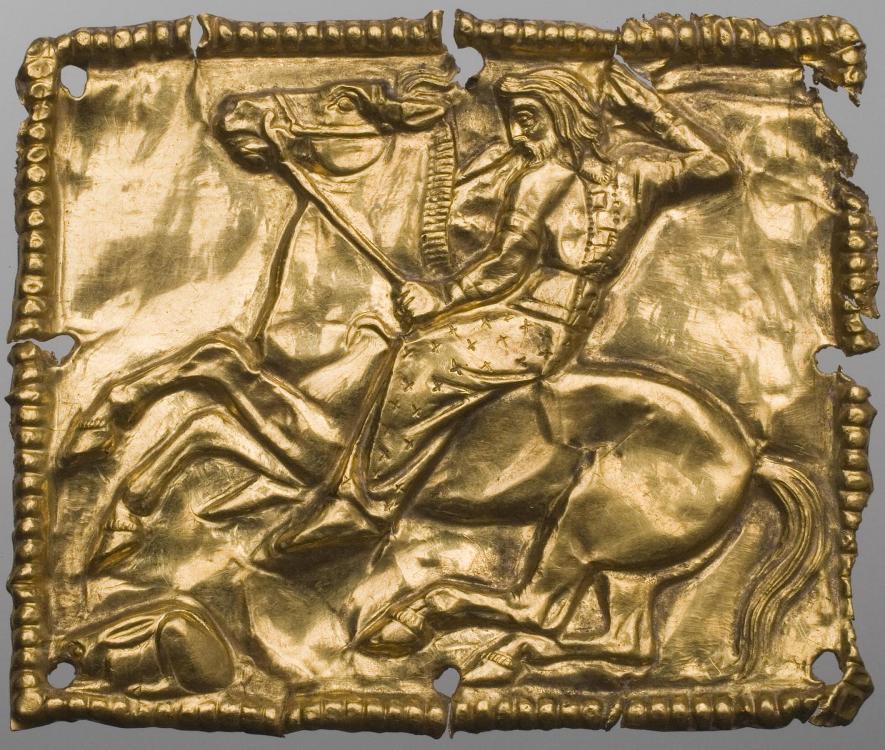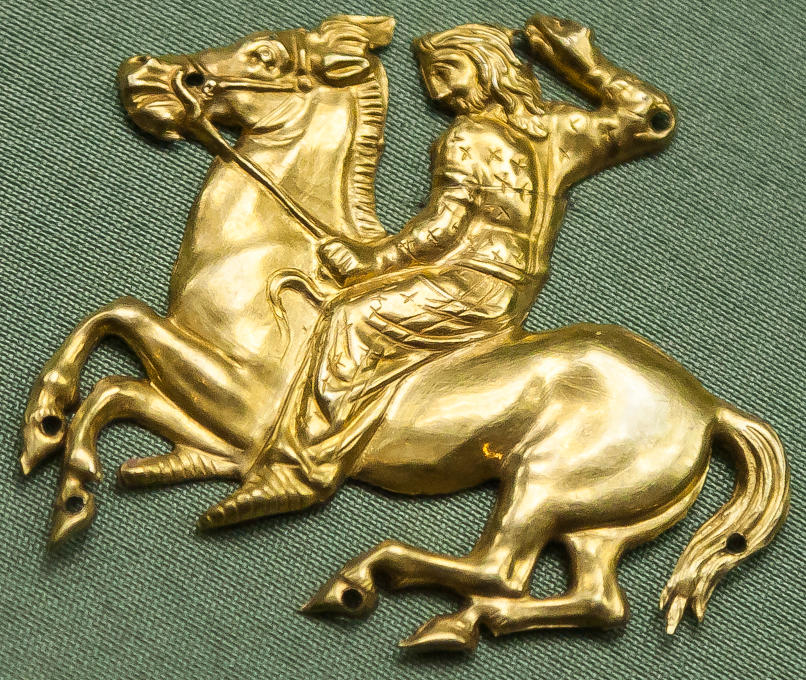Join Amazon Prime - Watch Thousands of Movies & TV Shows Anytime - Start Free Trial Now

Join Amazon Prime - Watch Thousands of Movies & TV Shows Anytime - Start Free Trial Now
Scythian Hare Hunt Plaques from Kul’ Oba, northern Black Sea region, first half of the 4th century BC
State Hermitage Museum, St. Petersburg.

A larger image of the Scythian Hare Hunt Plaque from Kul’ Oba, Hermitage Museum, St. Petersburg, КО.-48.
Plaque Depicting a Hunting Scene
Created: 4th century BC
Found: Kul Oba Barrow. Crimea, environs of Kerch
Material: gold
Technique: stamped, chased and engraved
Dimensions: 5.2 x 4.2 cm
Acquisition date: Entered the Hermitage in 1831
Inventory Number: КО.-48
State Hermitage Museum, St. Petersburg.
Gold plaque with hare hunt. Kul’ Oba, northern Black Sea region, first half of the 4th century BC. The State Hermitage Museum, St Petersburg.
The horseman on this plaque wears characteristic Scythian dress. A hare crouches at his horse’s hooves, and first glance this may be just an ordinary hunting scene.
However, according to popular beliefs of Iranian peoples, sacrificing a hare brings victory in battle.
From the late 5th century BC onwards, hares often feature on Scythian gold plaques, demonstrating the animal’s importance.
Source: What do nomads leave behind – The British Museum Blog
Historical Museum, Moscow.

A larger image of the Scythian Plaque from Kul’ Oba, Historical Museum, Moscow.
Sew on plaque. Gold. Around 350 BC, Kul-Oba Kurgan, Kerch.
Source: Exhibition "Nomad. Between heaven and earth". Gold and Weapons of the Nomads. Part 3.
Back to Scythian, Saka and Sarmatian Illustrations of Costume and Soldiers


